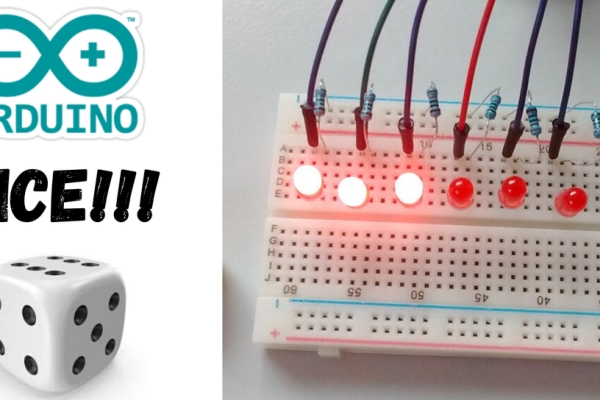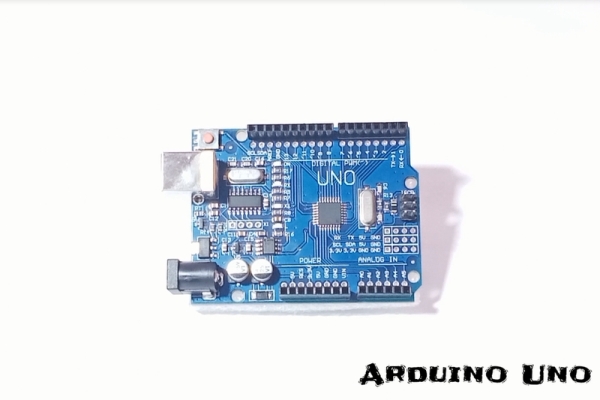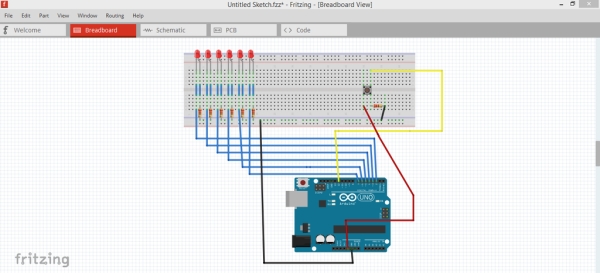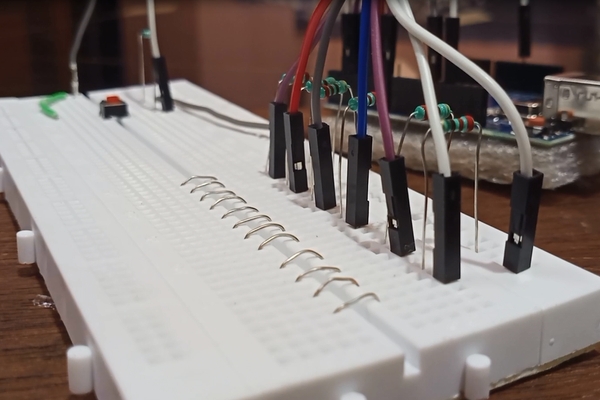
ABOUT THIS PROJECT
I made a dice throwing prototype: if you press the button, a random number between 1 and 6 is generated and the corresponding number of LEDs are lit up. This was a holiday project with my kids 🙂
Dice throwing prototype using Arduino UNO, a button switch and 6 LEDs.
Full tutorial on my channel visit my channel for full tutorial!!!
Step 1: Parts & Materials Required!!!

- Arduino uno
- 6x LED’S
- A breadbord or a prototyping board
- 6x 220 ohm Resistors
- 1x 1k ohm Resistors
- A push button
Step 2: Circuit Diagram!!!

I have made a circuit diagram for the connections of Arduino,led,push button and resistors.
see the circuit diagram for the connections.
Step 3: Connections!!!

Now connect led’s negative terminal to the 220ohm resistors and positive terminal to the arduino’s digital pins from 2 to 7.and connect the other led of the resistors to the Gnd(ground) pin.
For rest of the connections for push button see the circuit diagram!!
Step 4: Additional Changes for the Led’s!!!

I have added the BRIDGE like structure at the middle of the breadboard for the led’s to rest infront of the wires and resistors JUST TO LOOK CLEAN.
U CAN ALSO SKIP THIS PART IF U DO NOT WANT TO DO THIS.
Step 5: CODE!!

//Now hook up your pc with arduino and just download the below code and upload to your arduino.
//Dynamic Innovator// set to 1 if we're debugging
#define DEBUG 0
// 6 consecutive digital pins for the LEDs
int first = 2;
int second = 3;
int third = 4;
int fourth = 5;
int fifth = 6;
int sixth = 7;
// pin for the button switch
int button = 12;
// value to check state of button switch
int pressed = 0;
void setup() {
// set all LED pins to OUTPUT
for (int i=first; i<=sixth; i++) {
pinMode(i, OUTPUT);
}
// set buttin pin to INPUT
pinMode(button, INPUT);
// initialize random seed by noise from analog pin 0 (should be unconnected)
randomSeed(analogRead(0));
// if we're debugging, connect to serial
#ifdef DEBUG
Serial.begin(9600);
#endif
}
void buildUpTension() {
// light LEDs from left to right and back to build up tension
// while waiting for the dice to be thrown
// left to right
for (int i=first; i<=sixth; i++) {
if (i!=first) {
digitalWrite(i-1, LOW);
}
digitalWrite(i, HIGH);
delay(100);
}
// right to left
for (int i=sixth; i>=first; i--) {
if (i!=sixth) {
digitalWrite(i+1, LOW);
}
digitalWrite(i, HIGH);
delay(100);
}
}
void showNumber(int number) {
digitalWrite(first, HIGH);
if (number >= 2) {
digitalWrite(second, HIGH);
}
if (number >= 3) {
digitalWrite(third, HIGH);
}
if (number >= 4) {
digitalWrite(fourth, HIGH);
}
if (number >= 5) {
digitalWrite(fifth, HIGH);
}
if (number == 6) {
digitalWrite(sixth, HIGH);
}
}
int throwDice() {
// get a random number in the range [1,6]
int randNumber = random(1,7);
#ifdef DEBUG
Serial.println(randNumber);
#endif
return randNumber;
}
void setAllLEDs(int value) {
for (int i=first; i<=sixth; i++) {
digitalWrite(i, value);
}
}
void loop() {
// if button is pressed - throw the dice
pressed = digitalRead(button);
if (pressed == HIGH) {
// remove previous number
setAllLEDs(LOW);
buildUpTension();
int thrownNumber = throwDice();
showNumber(thrownNumber);
}
}
Source: Electronic Dice!!!
